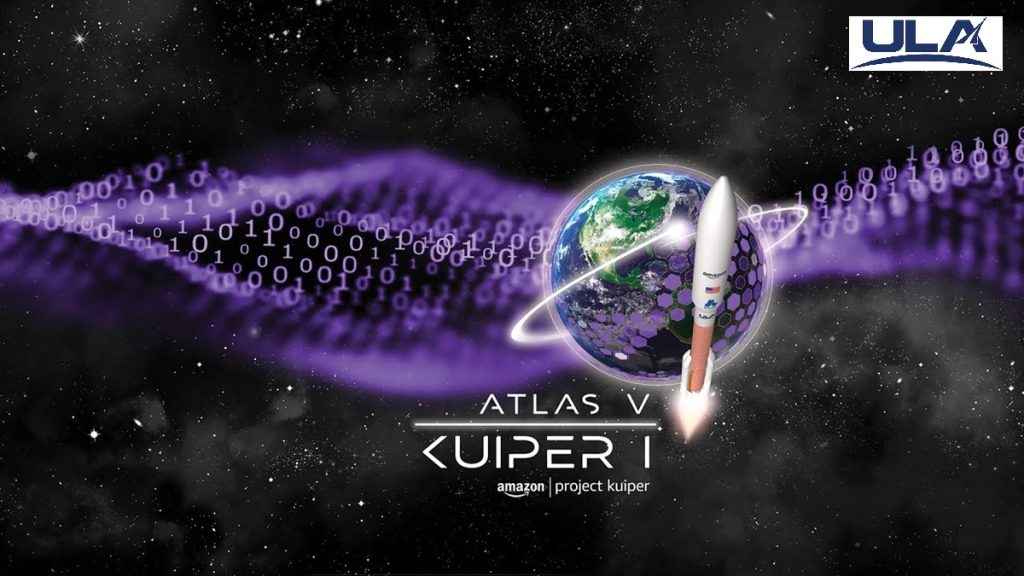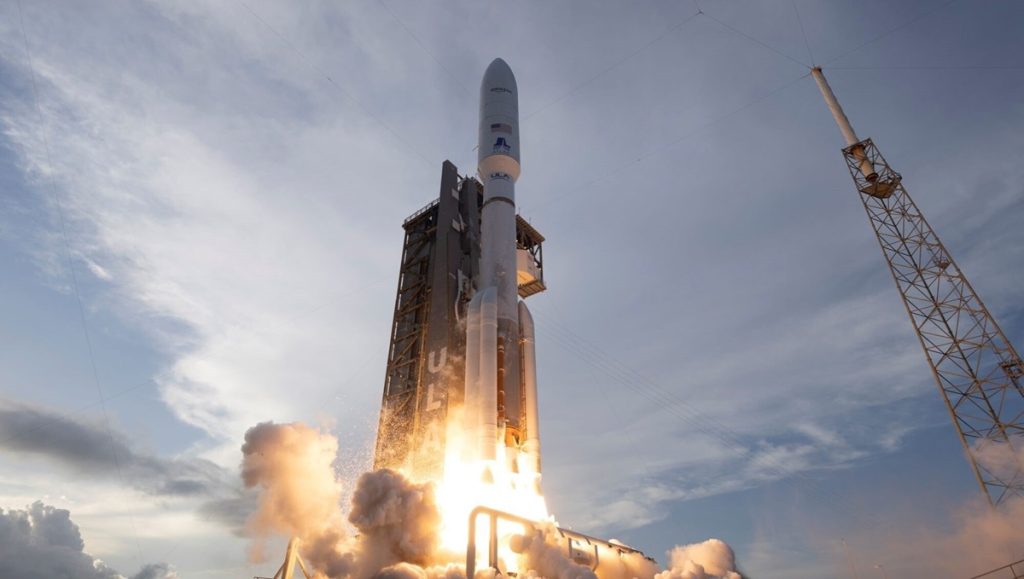
United Launch Alliance (ULA) launched Amazon’s first Kuiper-1 mission aboard an Atlas V rocket on April 28 at 7:01 p.m. EDT. The liftoff took place from Space Launch Complex-41 at Cape Canaveral Space Force Station in Florida.
This mission begins the full-scale deployment of Amazon’s Project Kuiper satellite network, which aims to provide broadband service worldwide, including in unserved and underserved regions.
Beginning of Kuiper satellite network deployment
Amazon’s Project Kuiper will use over 3,200 low Earth orbit (LEO) satellites to deliver fast, reliable internet globally. The April 28 launch marked the first step in Amazon’s satellite rollout using ULA rockets.
“This launch is a major milestone for Amazon’s plan to expand broadband access,” said Gary Wentz, ULA Vice President of Government and Commercial Programs. He added that ULA has closely worked with the Kuiper team and looks forward to continuing the partnership.

Atlas V and Vulcan to handle satellite deployment
Project Kuiper had earlier tested two prototype satellites in 2023. ULA plans to launch seven additional Atlas V missions and 38 flights with its Vulcan rocket for Project Kuiper. This major contract, one of the largest in commercial spaceflight, will deploy over half of Amazon’s 3,200-satellite broadband network.
ULA President and CEO Tory Bruno said, “This launch sets the tone for future missions.” He noted that infrastructure upgrades at Cape Canaveral are helping support faster launch rates. The addition of a second launch integration facility will allow ULA to process two missions simultaneously, improving flexibility and turnaround times.
Atlas V Rocket Overview
The Atlas V 551, employed in the Kuiper-1 mission by Amazon, stood 205 feet (62.5 meters) high. It carried satellites into low Earth orbit with the following parts:
- Payload Fairing: A 17.7-foot (5.4-meter) wide, two-piece shell protected the satellites. Made of an aluminum-honeycomb core and graphite-epoxy layers, it shielded the cargo during launch.
- Centaur Upper Stage: This 10-foot (3-meter) wide, 41.5-foot (12.6-meter) long stage used super-cooled liquid hydrogen and oxygen to power its RL10A-4-2 engine, producing 22,600 pounds (100.5 kilo-Newtons) of thrust. Insulated tanks kept the fuel stable.
- Booster Stage: The 12.5-foot (3.8-meter) wide, 106.5-foot (32.5-meter) long booster used an RD-180 engine, burning refined kerosene (RP-1) and liquid oxygen to deliver 860,200 pounds (3.83 mega-Newtons) of thrust. Five solid rocket boosters, each adding 371,550 pounds (1.65 mega-Newtons) of thrust, boosted liftoff power.
- Avionics: The Centaur’s control system guided the rocket, managing navigation and flight sequencing for both stages.
Launch site operations at Space Launch Complex-41
At Cape Canaveral’s Space Launch Complex-41, the Atlas V rocket was assembled inside the Vertical Integration Facility (VIF) on a Mobile Launch Platform. The fully stacked rocket was then rolled out about 1,800 feet to the launch pad for final checks, fueling, and liftoff.
ULA said it expects the new setup to benefit both commercial and government launches in the future. “With new technology and upgrades in place, the sky is no longer the limit,” the company noted.
ULA’s 20-year role in national space missions
ULA highlighted that for the past 20 years, it has played a key role in U.S. national security space missions, delivering payloads to complex orbits with high precision. The company now plans to expand its capabilities into commercial LEO markets with the Vulcan rocket, which features a modular design and supports efficient access to various orbits.
